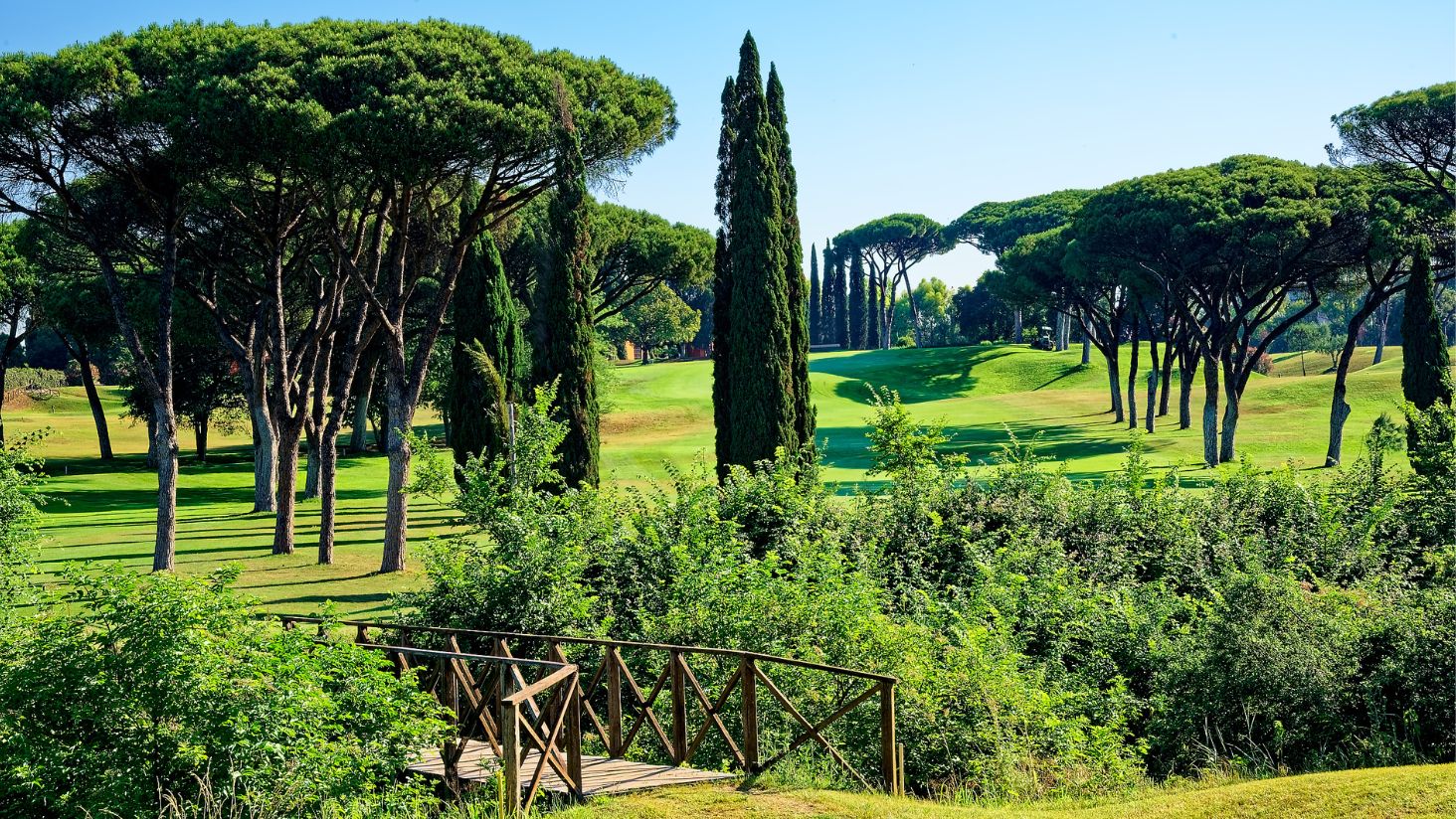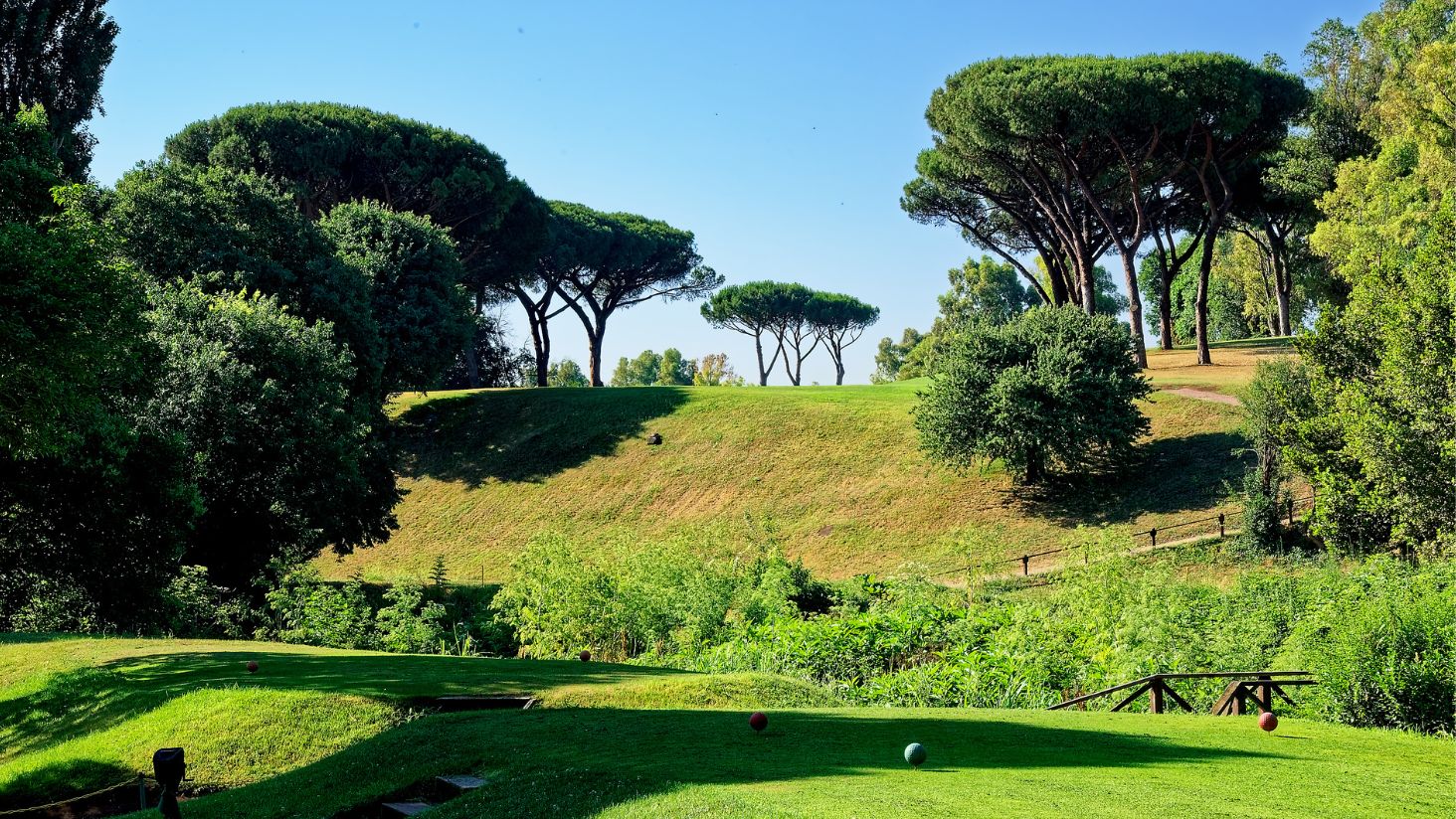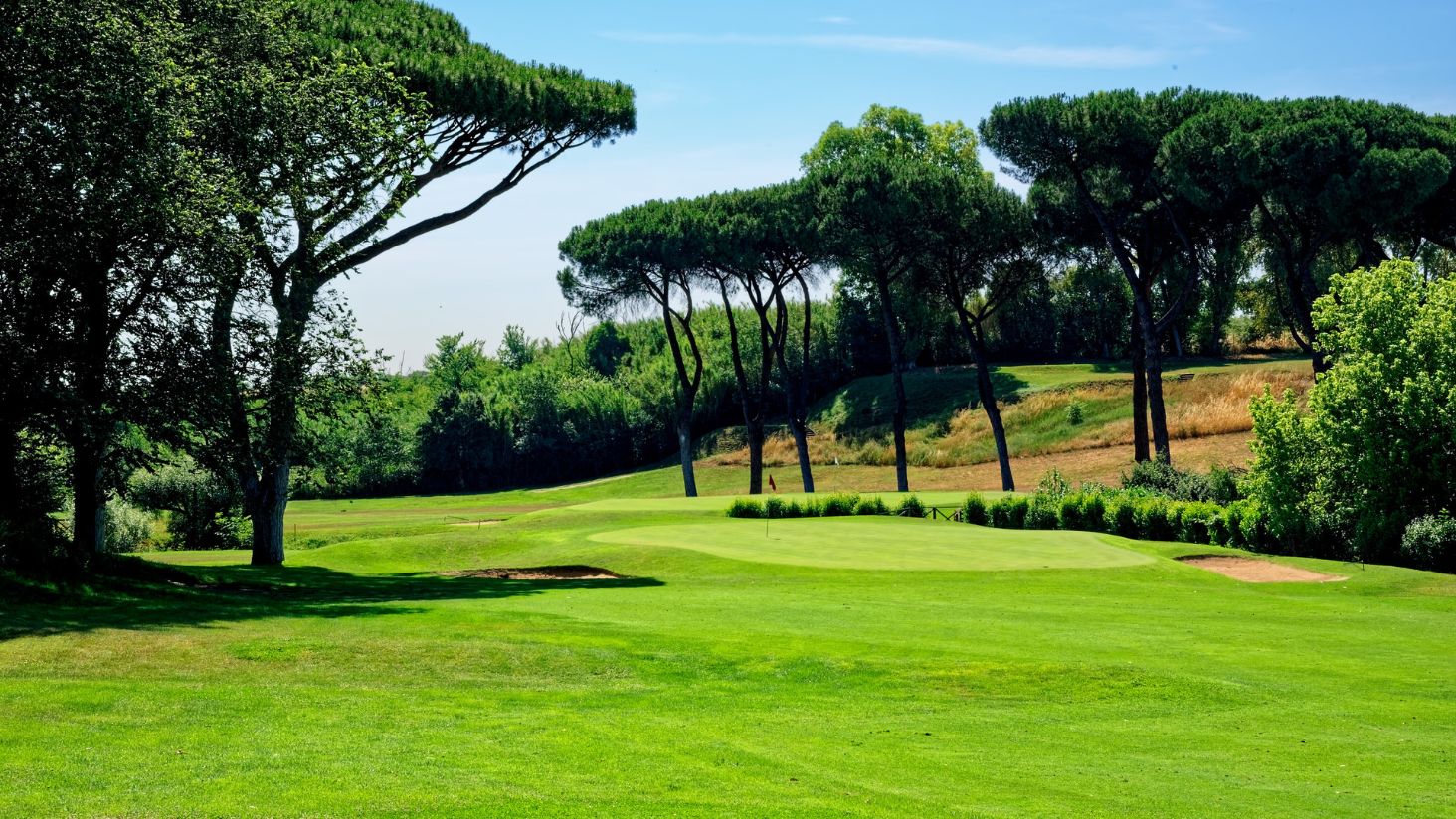


Circolo del Golf Roma Acquasanta - Italy's oldest golf course
Immerse yourself in the history of golf! Italy's oldest golf course, Circolo del Golf Roma Acquasanta, offers a unique playing experience with historical flair.
The game with the little white ball was already being played in Rome towards the end of the 19th century. in 1903, the decision was made to build a golf course on the grounds of Count Torlonia, initially with nine holes, which was extended to 18 holes a good ten years later - the birth of Rome's oldest golf course. The grounds are steeped in history: to the right of today's hole 1 are the buildings of the Acquasanta thermal baths, built in the 15th century by Pope Paul V. Behind the tee of hole 3 is a spring of soothing mineral water, which is known from legends about the nymph Egeria and was formerly known as the Acqua Santa spring. Water still comes into play on some holes today. The course is also located on hilly terrain, which repeatedly leads to height differences between the tee and the flag and should be taken into account when choosing a club. The topography also ensures that many a blind shot has to be mastered on the round. With a total length of between 4,959 and 6,000 meters, the Par 71 course is not a length monster, but the constant uphill and downhill requires careful club selection.

Up and down at the Circolo del Golf Roma Acquasanta
From the clubhouse, the course initially heads downhill, with water coming into play right at the first hole in the form of a small, transverse stream. A first visual treat is hole 3: it is steeply uphill from the Tee and the ball has to be placed precisely between tall pine trees. If you stay too short on this Par 4, the flag is often not in sight on the second shot. Anyone playing the course for the first time should therefore use a birdie book or a GPS app. It is not until hole 7 that a Par-5 comes into play, also with some elevation changes. You should always be aware of the tall pine trees, which can block the direct path to the green depending on the position of the ball. The green complex around the eighth green is unusual: not only does a significantly elevated green lurk here, the terrain around the flag is criss-crossed by hills and a small embankment in front of the green makes the approach difficult.

In the second part, the Par-3 on hole 11, which is only 120 meters long at most, is of course memorable. The green lies clearly below the tees, as if on a small plateau, and length control and direction are required here. The dogleg right on the following hole with an almost steep slope on the left is also memorable. This is followed by a colorful potpourri of doglegs, different elevations, sometimes clearly undulating greens and also some treacherous bunkers and a little water. The final sequence of holes 17 and 18 is wonderful: first, the 17th is clearly downhill, then two watercourses cross the holes in the direction of the green, which is slightly hidden to the left. The last hole then heads back towards the clubhouse and uphill over several levels.

The Circolo del Golf Roma Acquasanta is a typical Italian members' club: people know each other and the members usually go out for a round on foot. Nevertheless, guest players are also very welcome here - and can also use a buggy instead of a round on foot, albeit without GPS. The course not only offers a varied design, but also provides wonderful views of the city and the surrounding area.





Release date
21 Jun 2025
photos
The Circolo del Golf Roma Acquasanta is Italy's oldest golf club. (Photo: Michael Althoff)
